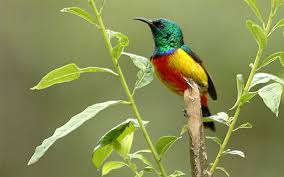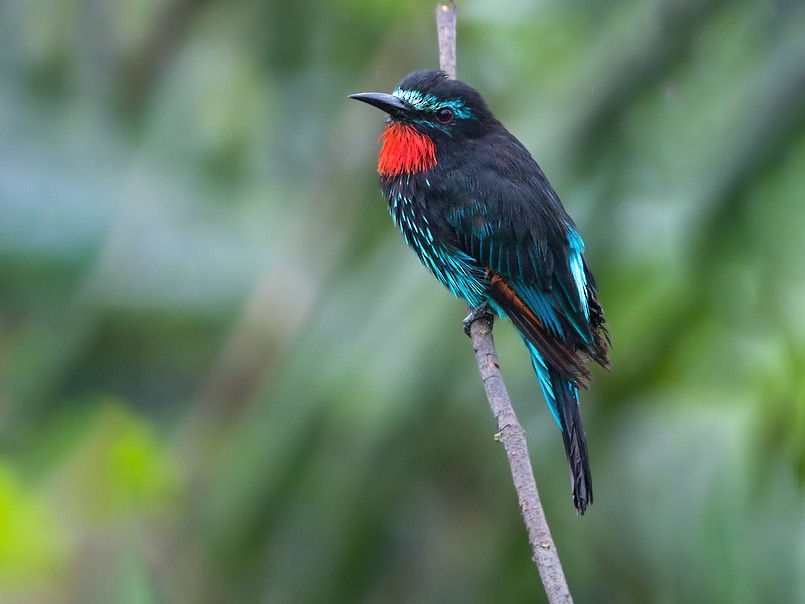Top 10 Birds In Bwindi
Top 10 Birds in Bwindi: One of Uganda‘s largest natural forests is Bwindi Impenetrable Forest National Park. It is situated in the Kanungu district in the Southwest of the nation, close to the edge of the Albertine Rift, on Uganda’s border with the Democratic Republic of the Congo. The Virunga mountains are just roughly 25 kilometers North of the park. The primary reason people travel to Bwindi is to see mountain gorillas. But Bwindi is home to more than simply gorillas. Originally, the Batwa, an indigenous tribe, lived in the jungle. Today, they serve as tour guides and provide tourists a taste of their culture.
The Impenetrable Forest is remarkable for its biodiversity, with more than 150 different species of trees and ferns. Along with over 220 butterfly species, 27 frog species, 348 bird species, and 120 mammals—including elephants, antelope species, and other primates like baboons—it is also home to these species. The Chapin’s flycatcher, Shelley’s crimsonwing, and Grauer’s broadbill are among the globally endangered bird species that Bwindi is known for; these birds make up the Top 10 birds in Bwindi.
The doherty’s bushstrike, Rwenzori nightjar, blackbilled turaco, black bee eater, montane oriole, handsome francoline, kivu ground thrush, and regal sunbird are some of the other notable birds of Bwindi.
The majestic sunbird
At 11.5 cm in length, the regal sunbird, or Cinnyris regius, is typically a little bird. The male’s upper body has a golden green color, with red and yellow breasts and dark wings. The female on the other hand, has a yellowish underbody and drab top portions. Their nests are located in the central branches of trees and shrubs, and they breed between November and January. The Ruhija sector in the Eastern portion of Bwindi Forest is home to this bird.

Ground thrush Kivu
The forecrown of this bird is orange. It may be spotted in Bwindi at the Buhoma Gate and waterfall trail. It inhabits altitudes between 1500 and 2800 meters above sea level. Due to its high decibel level, the Kivu ground thrush is more likely to be seen in the morning. While grazing, it can also be seen along the trail in the late afternoon or early evening.

Shelley’s crimsonwing Kivu ground thrush
The population of this fragile bird species is currently estimated to be between 2500 and 9999 individuals. Despite existing for more than a century, nothing is known about the behavior or reproduction of the shelley’s crimsonwing. The males’ wings and tail are black, while their face, crown, and back are all brilliant red. The female has a crimson torso and an olive head. The sound “tit tit tit” identifies it.
Bee eaters in black
At a distance, the black bee eater, or merops gularis, looks to be completely black. Still, it’s essentially just a black bird with a brilliant red throat and a blue belly. The birds can reach a height of 20 cm and are often reticent. Compared to other bird species, they are more difficult to locate in the forest, which may be attributed to their shyness. They can be identified by the “ji-lip” sound, which is typically audible. Typically, the Buhoma area of Bwindi Impenetrable National Park is home to the black bee eater.

Nightjar of the Rwenzori people
This bird belongs to the montane nightjar subspecies and is also referred to as the C.p. Rwenzori. The bird is rather dark, reaching a maximum length of 23 centimeters and having a blackish hue. The female has a tail that is less white than the male’s, which has white dots on its four major segments. They are nocturnal birds, as the name “nightjar” implies, and they mostly eat huge insects, such as moths. The elevations at which they can be found range from 1000 to 3350 meters above sea level. It is one of the top 10 birds in Bwindi and can be found in the Ruhija area.
Taco with a black bill.
As its name implies, the black billed turaco has a black bill. Aside from the black bill, it resembles the South African Knysna turaco in appearance. It is roughly 40–42 cm long, thick, and has long tails. The male and female share incubation responsibilities after the bird deposits two eggs on a stick platform three to five meters above the ground. The distinctive Kwah khaw kwah sound is used to identify the black billed turaco, which is found in the Buhoma area.
The broadbill of Grauer
This species, which is also called the African green broadbill, is extremely rare in Bwindi. It inhabits Bwindi at an elevation of 2100–2200 meters above sea level. The bird has a blue throat, a tiny bill, and is bright green in color. The elder ones also have extremely thin black eyestripes. Typically, the green broadbill feeds on fruit, seeds, flowers, flower buds, and invertebrates.
The Montane oriole
Tropical woodlands such as Bwindi are the native habitat of this little and benign bird. They have, however, adapted successfully to parks, streets, and backyards, among other places. During the summer and fall, they mostly feed on berries, but they also consume fruits and vertebrates. The montane oriole primarily builds its nests in tall poplars, willows, and cottonwoods.
The bushshrike of Doherty
The Doherty’s bushshrike, featuring a large black breast, a lemon-yellow belly, a black tail, and a vivid red forehead, is among the most gregarious birds that have ever been seen on Earth. Even though it’s colorful, the bird prefers to blend in by being reticent, giving it the appearance of a skulking top 10 birds in Bwindi. They are reported to live in the dense forest undergrowth at altitudes between 1500 and 3350 meters, and their breeding season occurs in Bwindi, Uganda, between May and June.
The African wood owl, guel’s rush warbler, yellow-eyed black flycatcher, African green pigeon, and strip-breasted tit are some of the other birds found in Bwindi. The ideal months to go birding in Bwindi are from November to April, when migrating birds are in the forest. However, birding is possible throughout the year.



